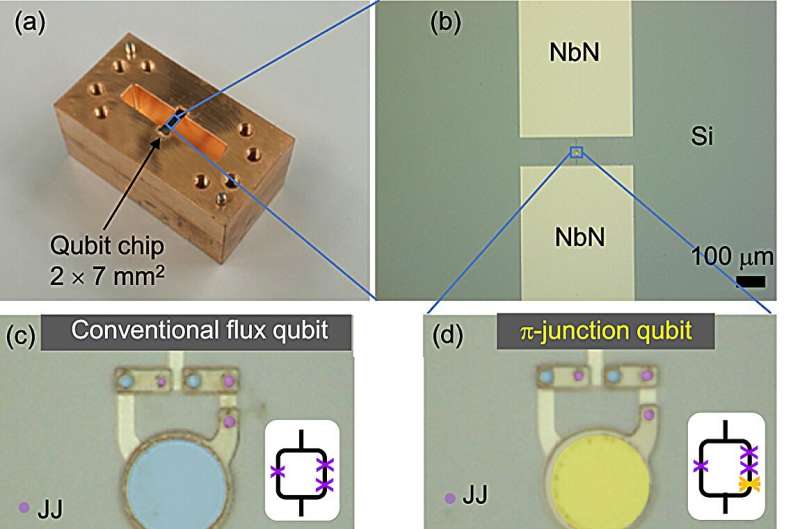
October 17, 2024 by Bob Yirka , Phys.org
Collected at: https://phys.org/news/2024-10-superconducting-flux-qubit-magnetic-field.html
A team of computer engineers from the National Institute of Information and Communications Technology, NTT Corporation and Nagoya University have developed what they claim is the world’s first superconducting flux qubit that can operate without the need for a surrounding magnetic field.
In their paper published in the journal Communications Materials, the group describes how they used a ferromagnetic Josephson junction to create the flux qubit and how well it performed.
A flux qubit is made using an extremely tiny loop made of a superconductor that allows electrical current to flow either clockwise or counterclockwise, or in a quantum superposition of both directions. Such qubits are used in quantum computer designs via nonlinear inductance of a Josephson junction. Until now, all such flux qubits could only be run when enveloped in a magnetic field.
In this new effort, the research team introduced the use of a ferromagnetic Josephson junction (π-junction) when creating their flux qubit—a move, the team claims, that allows the flux qubit to operate independently. They also claim it allows for the longest lifetime yet for flux qubits. Together, they suggest the improvements could lead to the development of a truly high-performance quantum computer.
Flux qubits were developed after transmon qubits proved problematic due to frequency crowding, resulting in low anharmonicity. Using Josephson junctions resulted in higher anharmonicity but has also been difficult to scale to a usable size because of the big coils needed to induce the magnetic field. The coils also tend to make noise, which has to be muted to prevent introducing errors into the system.
The team found that using a π-junction removed the need for the coils and the noise they produced. It also allows for 180° phase shifting, which the researchers note, allows the qubit to function independently, where it performs at its best. To create their π-junction, the researchers combined a ferromagnetic Josephson device with previously developed NICT nitride superconducting qubit technology.
Testing so far has shown the new type of qubit was able to demonstrate coherence properties though they were still a little shorter than non- π-junction designs.
More information: Sunmi Kim et al, Superconducting flux qubit with ferromagnetic Josephson π-junction operating at zero magnetic field, Communications Materials (2024). DOI: 10.1038/s43246-024-00659-1
Journal information: Communications Materials

Leave a Reply